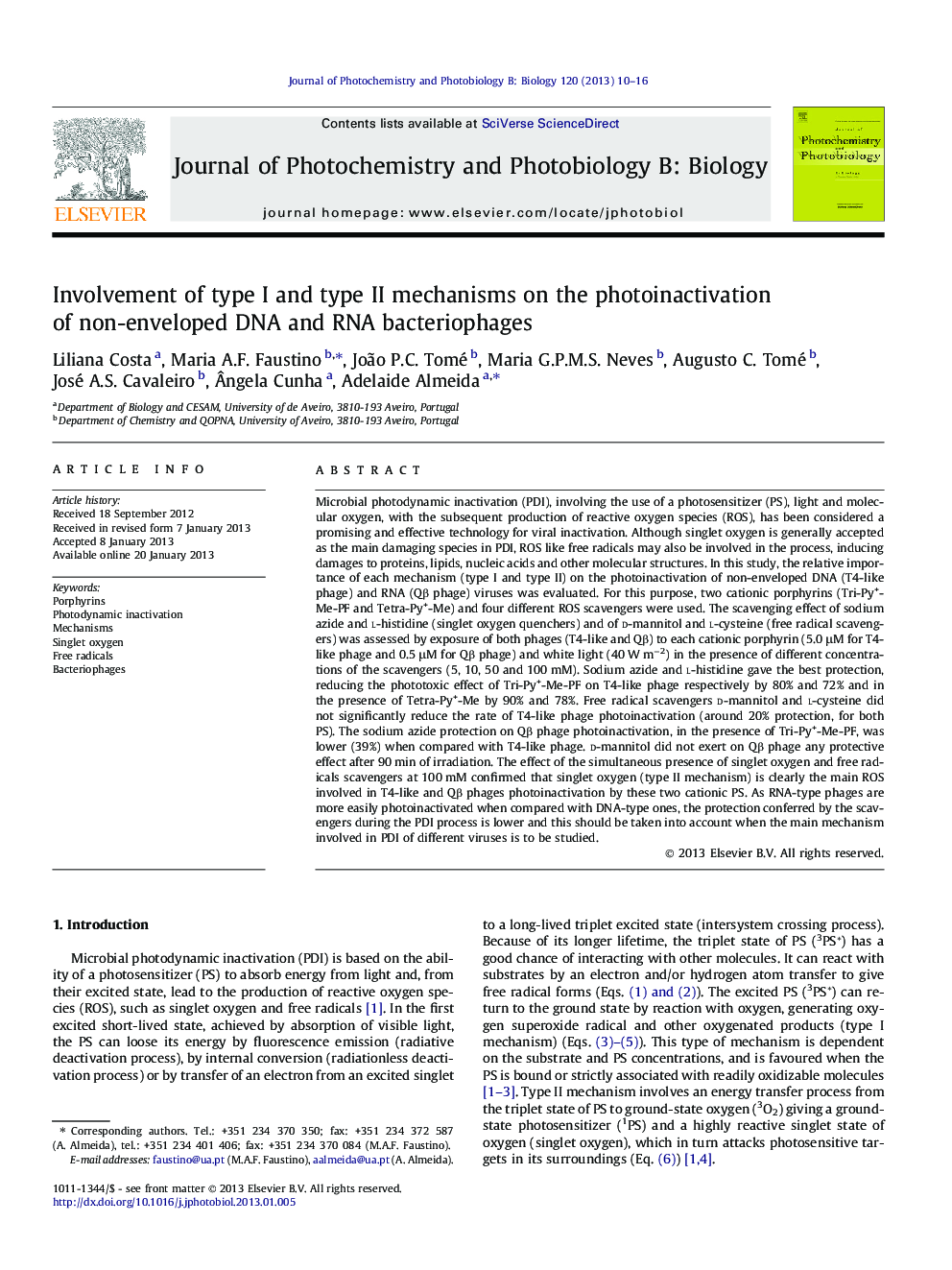| کد مقاله | کد نشریه | سال انتشار | مقاله انگلیسی | نسخه تمام متن |
|---|---|---|---|---|
| 30623 | 44494 | 2013 | 7 صفحه PDF | دانلود رایگان |

Microbial photodynamic inactivation (PDI), involving the use of a photosensitizer (PS), light and molecular oxygen, with the subsequent production of reactive oxygen species (ROS), has been considered a promising and effective technology for viral inactivation. Although singlet oxygen is generally accepted as the main damaging species in PDI, ROS like free radicals may also be involved in the process, inducing damages to proteins, lipids, nucleic acids and other molecular structures. In this study, the relative importance of each mechanism (type I and type II) on the photoinactivation of non-enveloped DNA (T4-like phage) and RNA (Qβ phage) viruses was evaluated. For this purpose, two cationic porphyrins (Tri-Py+-Me-PF and Tetra-Py+-Me) and four different ROS scavengers were used. The scavenging effect of sodium azide and L-histidine (singlet oxygen quenchers) and of D-mannitol and L-cysteine (free radical scavengers) was assessed by exposure of both phages (T4-like and Qβ) to each cationic porphyrin (5.0 μM for T4-like phage and 0.5 μM for Qβ phage) and white light (40 W m−2) in the presence of different concentrations of the scavengers (5, 10, 50 and 100 mM). Sodium azide and L-histidine gave the best protection, reducing the phototoxic effect of Tri-Py+-Me-PF on T4-like phage respectively by 80% and 72% and in the presence of Tetra-Py+-Me by 90% and 78%. Free radical scavengers D-mannitol and L-cysteine did not significantly reduce the rate of T4-like phage photoinactivation (around 20% protection, for both PS). The sodium azide protection on Qβ phage photoinactivation, in the presence of Tri-Py+-Me-PF, was lower (39%) when compared with T4-like phage. D-mannitol did not exert on Qβ phage any protective effect after 90 min of irradiation. The effect of the simultaneous presence of singlet oxygen and free radicals scavengers at 100 mM confirmed that singlet oxygen (type II mechanism) is clearly the main ROS involved in T4-like and Qβ phages photoinactivation by these two cationic PS. As RNA-type phages are more easily photoinactivated when compared with DNA-type ones, the protection conferred by the scavengers during the PDI process is lower and this should be taken into account when the main mechanism involved in PDI of different viruses is to be studied.
► Type II is the main mechanism of phage photoinactivation by Tri-Py+-Me-PF and Tetra-Py+-Me.
► The afforded degree of protection varied with the concentration of the scavengers.
► The scavenging effect on PDI was higher in T4-like (DNA) than in Qβ (RNA) phages.
► The type of phage must be considered when the mechanisms involved in PDI is studied.
Journal: Journal of Photochemistry and Photobiology B: Biology - Volume 120, 5 March 2013, Pages 10–16